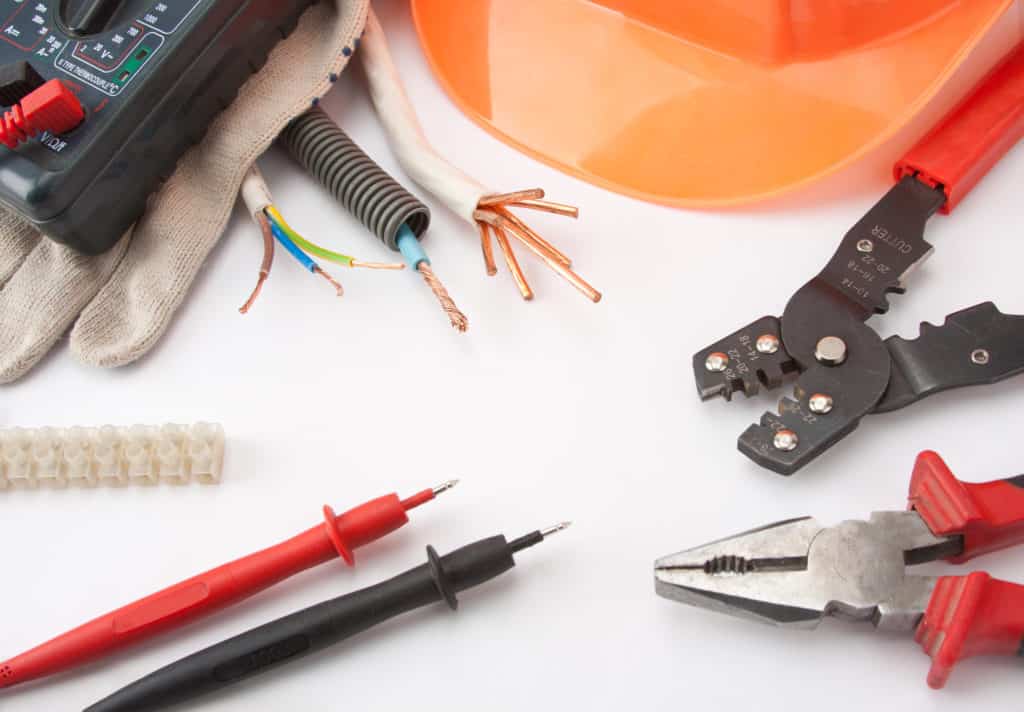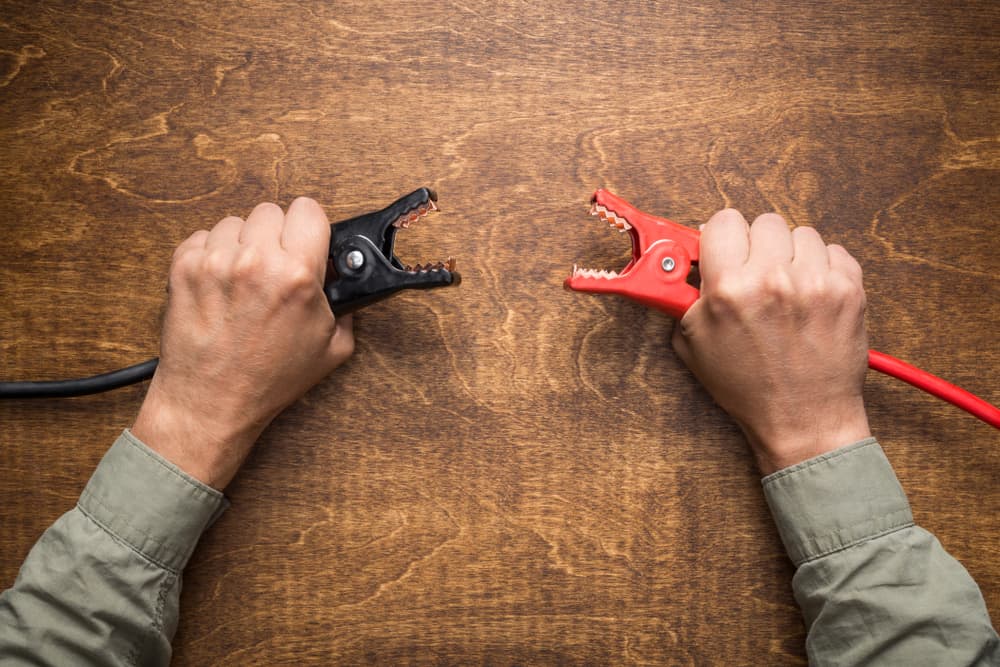
A high-quality golf cart is typically very adaptable in many ways and can be upgraded to include a wide variety of items that make it interesting for a person’s operation.
For example, some people may want to add a 12-volt power outlet or adapt to their golf cart to keep it operating more smoothly.
These outlets can be used to change up a variety of different elements, such as phones and much more.
However, a typical golf cart uses more than 12 volts when operating, which does change up how you integrate these outlets into your cart and its build.
For the most part, this type of change is something that most golf cart owners should be able to handle without a lot of challenge.
However, you may need to change up this approach if you aren’t sure what to do and want to make sure you get the best results.
And you may need to call a professional if you don’t feel comfortable.
How to Install a 12-Volt Power Outlet in a Golf Cart
1. Finding a Spot to Install the Outlet
Before you start installing an outlet on your cart, it is important to the time to decide where you want to install one.
There are many different possibilities in this situation.
First of all, you can install one directly on the panel of the cart to provide yourself with easy access to the electricity that you need.
You will need to carefully remove the panel, if necessary, to get access in this situation.
This step may require a variety of different tools that allow you to slide the panel away from the front of the cart.
Usually, you can pry it away with a screwdriver but may need to remove screws and other items that hold down the panel.
In some carts, you may even find an outlet panel that can be removed and where you can put the electrical item to keep it sturdy and to avoid any shaking or other issues.
You may also use a small saw to cut a hole in the panel if you can’t find one to remove.
This option is a good idea if you want to adjust your cart in a way that makes the most sense.
However, you need to check behind the panel to make sure that you aren’t going to cut into any electrical wires or other types of items that could damage your cart and cause operational problems
Likewise, you can also choose to install your outlet underneath of the seat or along the edges of the cart’s shelf to make it easier to protect it from damage.
You may just need to attach the outlet directly to the surface of the plastic of the cart, which may be frustrating.
However, this may be a good choice if you want to keep your outlet stable and strong and protected from any type of damage.
It may even be a good idea to find an area where you can install a cover that goes over your outlet to protect it from electrical shock.
These covers often snap shut over the top of your outlet and can even lock if you want them to do so.
The choice here is yours and depends on many different factors, including the location of your outlet and the power you want to use in the outlet.
And after you have found a place where you want to install your outlet, you can get started with adding one to your cart.
Remember that you’re going to be tapping into your cart’s electrical system, here, so you need to be very careful.
We suggest wearing electricity-safe gloves, a pair of rubber-soled shoes, goggles, and using electrical tape on the wires when needed.
Thankfully, you won’t have to do that many cuts or splices on your wires, which should keep them from getting too damaged here.
2. Locate the Engine Bay
Do you know one of the biggest differences between a golf cart and a normal automobile?
Most golf carts keep their engine n the back, rather than in the front like in other types of vehicles.
This design is purposeful because it helps to focus most of the power on the wheels and the axles of a car.
Beyond that, it also helps to protect a cart from poor operational issues and also ensures that the engine is as protected as possible from various types of outside contamination, like water and more.
So, where are you most likely to find the engine bay on your golf cart?
In almost every single cart on the market, you’ll find the bay underneath of the rear seats of your cart.
This location is very easy to access – just lift the seats and you should be able to get to your engine with little difficulty.
There may be a snap lock that holds the seats down, though, so be prepared to undo that lock.
You may also find that the motor is not under the seats but is located behind them and beneath a hood of some type.
Once you open up the engine bay, you’re going to see a number of different elements.
You’ll see many types of engine parts, like the starter, the various types of belts, and much more.
In a gas engine, you’ll even notice a gas tank and the piston section.
For an electrical motor, though, you’re mostly going to see a row of batteries.
Depending on the type of cart that you use, these batteries will vary in number and often include voltage outputs of many types to ensure that you can get a flow that works for you.
Now, you are going to try to find a 12-volt battery in your cart.
Thankfully, carts always have at least one 12-volt battery into which you can tap.
And this factor is very important because you’re going to use this battery to draw the power for your outlet.
Don’t worry – 12-volts doesn’t indicate the full power of the battery but just its outlet.
So if you attach it to an outlet, you won’t drain it immediately.
That said, running a cart with an outlet will drain your battery more quickly.
So be prepared for that possibility when you add an outlet to your cart.
The extra drain that it provides will vary depending on many factors, including the electrical needs of the device plugged into the cart.
You can usually expect your battery to go dead anywhere from 15-60 minutes faster when you use the outlet.
Thankfully, though, the outlet won’t drain any electricity when not in use.
So merely installing it won’t cause any issues with your cart’s operation or its electrical charge.
3. Run Outlet Wires to the Battery
At this point, you are at a pretty spot for this process.
Your outlet should be installed somewhere on the frame of your cart and you should have the back of the motor hood opened up.
This type of easy access is something that cart manufacturers strive for in all their models.
The idea is that they can allow customers to add upgrades to their carts in a way that satisfies them.
Just as importantly, this benefit also decreases the risk of making any mistakes when installing an outlet on your cart.
However, you’re going to have to perform one of the trickier steps in this process right now – running the outlet wires to the battery.
This step may not seem that complex until you realize that you need to run the wires along the bottom or inside of your cart’s frame.
Thankfully, you can jack up your cart and crawl beneath of it to get easier access to these areas.
Try to attach the wires to the side of the frame using tape or wire harnesses that keep the wires from moving too much or causing any damage.
If you are lucky, you may be able to run your wires all the way to your motor bay without any difficulties.
This usually occurs if the bottom of the cart is fairly open and allows easy access to various parts of its mechanics.
However, this option is not always the case – for example, you may find a wall in the frame that keeps the wires from reaching the engine bay.
Or perhaps you don’t want the wires to touch the ground or be too near the ground to avoid damaging them as the cart runs.
In this situation, you’re going to use a drill to cut through any barriers that lay between your outlet and the cart’s battery.
Typically, you are going to want to drill these holes as high up on the frame as possible to avoid hitting the ground.
You also must check the front and the back of the area before you drill – several times, if possible – to make sure you don’t run into any concerns.
You should have a good idea of where you are drilling because you won’t be boring through too many thick areas.
The size of the hole doesn’t have to be that significant – the size of a dime is probably a bit too much.
The reason you want a smaller hole is understandable – all you need to do is feed two wires through it.
And a small hole helps to keep the wires in place more easily and avoids any issues that may occur.
Don’t forget to attach these wires to a harness or to the side of your cart’s chassis, anyway, to keep them stable and firm.
Harnesses are preferable, here, but good electrical tape can also work.
4. Connecting the Wires Properly
At this point, you should have pulled your wires towards your battery, attached them to the chassis of your cart, and drilled through any areas that may have blocked the wires to give yourself easier access to the cart’s engine bay.
At this point, you are just about done but need to hook up your battery to the outlet.
This step is not something that should be overly difficult – most cart owners should be able to handle this step without any major challenge.
In fact, it is probably the easiest step here.
Start by taking the negative wire from the outlet and attaching it to the negative terminal on the 12-volt battery.
Make sure to double-check the status of the battery by reading the side and checking it stats.
You should have at least one 12-volt battery, here, and must avoid connecting to anything higher or lower.
Lower power will cause the outlet to run poorly, while too much power can fry out your electrical devices and even cause a fire on the cart – not a good look for you!
Make sure that you hold the positive wire away from the battery as you connect the negative one, as well, to avoid any shocks or unnecessary electrical danger.
Once the negative wire has been safely connected to the terminal, you can add the positive wire to the positive terminal.
As stated before, you should be wearing electricity-safe gloves to avoid shock.
We also suggest lying on a grounded cart if you are working beneath the vehicle or keeping your rubber-soled boots on if you are standing.
At this point, your cart should be just about ready to go.
Your outlet is sitting comfortably in its installation area, you’ve hooked up the wires properly, and you’re not in any danger of shock.
However, you need to test the connection to make sure that it is as safe as possible.
Without these tests, you are taking unnecessary risks that put your life and the lives of those who ride with you in danger.
5. Testing the Outlet
Before you assume that your outlet is safe, you must follow this testing process.
Doing so should take no more than 5-10 minutes and will give you the insight that you need to make sure that your cart is safe and ready to drive.
No matter cart brand or model you own, the testing process is likely to require you to:
- Turn on your cart and listen for any sparks as the engine begins
- Keep the engine bay open to look for any sparks as your cart runs
- Plug a device into the new outlet safely and slowly
- Watch for any sparks as you plug in the device and remove the plug if you see any
- Run your device if it stays plugged in to see how well the outlet is working
- Drive your cart for awhile with something plugged into the outlet
- Remove the device and plug it back in as you drive, watching for sparks
- Park the cart when you are finished
At this point, you should have a clear idea of whether something is wrong with your outlet connections.
If you fear that you did something wrong, you may want to take your cart to a professional to have them inspect it.
However, you may have just connected the outlet up wrong, used bad wires, or did not connect them.
Check these aspects before you hire an expert.




Leave a Reply